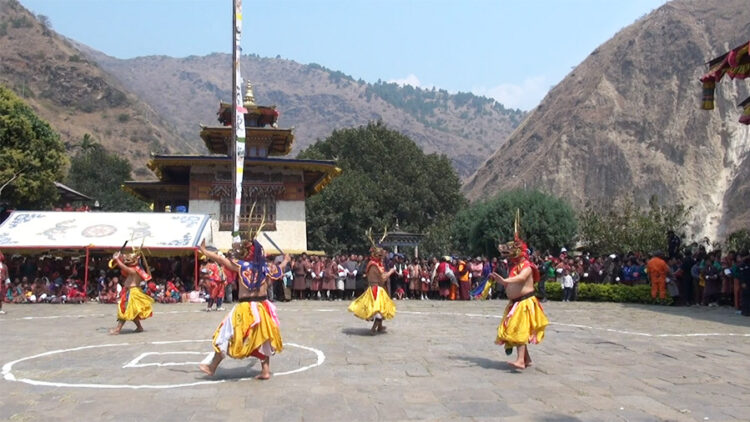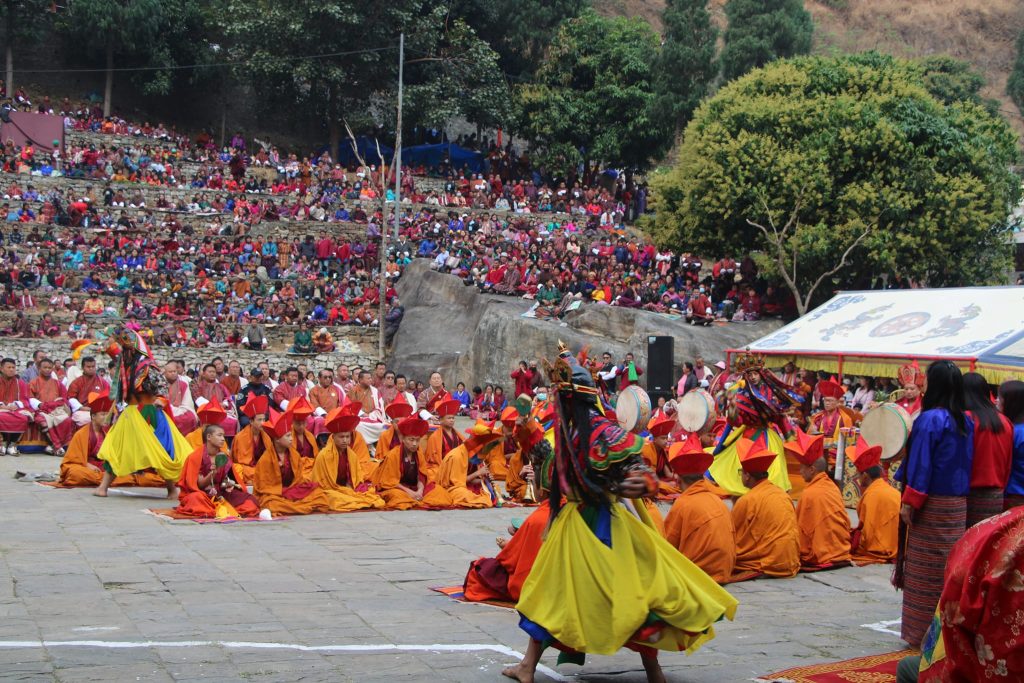



Top (L) image source – https://www.bbs.bt/200990
Other image source – Tashiyangtse Dzongkhag Administration Facebook page, dated 19 Mar 2024
Tucked away in the eastern heartlands of Bhutan, Gomphu Kora Tshechu is a vibrant and sacred festival that draws thousands of devotees, travelers, and farmers each year to Tongzhang Gewog in Trashi Yangtse District. Held annually on the 10th day of the second month of the Bhutanese lunar calendar, this tshechu is not just a religious observance but a spectacular convergence of spiritual devotion, cultural heritage, and rural enterprise.
A Site of Spiritual Significance
Set at an altitude of 820 meters, Tongzhang Gewog is nestled among lush paddy fields just below the road to Tashi Yangtse—roughly an hour’s drive from Trashigang. The site is revered as a meditation ground of Guru Rinpoche (Padmasambhava), who is believed to have subdued a malicious demon beneath a large rock here. This rock, now a pilgrimage landmark, is accompanied by a steep climb for blessings and a narrow passageway through stone that devotees crawl through to symbolically cleanse themselves of sins. Inside the revered Gomphu Kora Monastery, visitors will find unique relics such as a Garuda egg, remnants of iron bridge chains from Doksum, and other sacred artifacts. These relics enhance the spiritual gravity of the site, making it one of Bhutan’s most cherished pilgrimage destinations.
A Night of Circumambulation and Devotion
The Gomphu Kora Tshechu is characterized by its unique tradition of all-night circumambulation. Devotees from all corners of eastern Bhutan, as well as from neighboring Arunachal Pradesh (India)—particularly from Merak, Sakten, and Tawang—gather to walk clockwise around the monastery throughout the night. This act is believed to bestow great blessings and cleanse past misdeeds.
A Marketplace for Rural Prosperity
Beyond its religious and cultural depth, the tshechu serves as an economic opportunity for local communities. The large influx of people becomes a thriving market for farmers and artisans from Trashi Yangtse, Trashigang, and Monggar. Stalls brim with colorful local produce, including chili saplings, vegetables, nuts, bamboo crafts, and handmade utensils. For many, it’s a rare and valuable chance to generate income and promote traditional crafts to a wider audience.
A Legacy That Lives On
Instituted over three decades ago, the Gomphu Kora Tshechu remains a living testament to Bhutan’s rich spiritual traditions and community spirit. Its harmonious blend of devotion, culture, and economic livelihood makes it not only a vital religious observance but also a cherished social institution in eastern Bhutan.
Sources:
